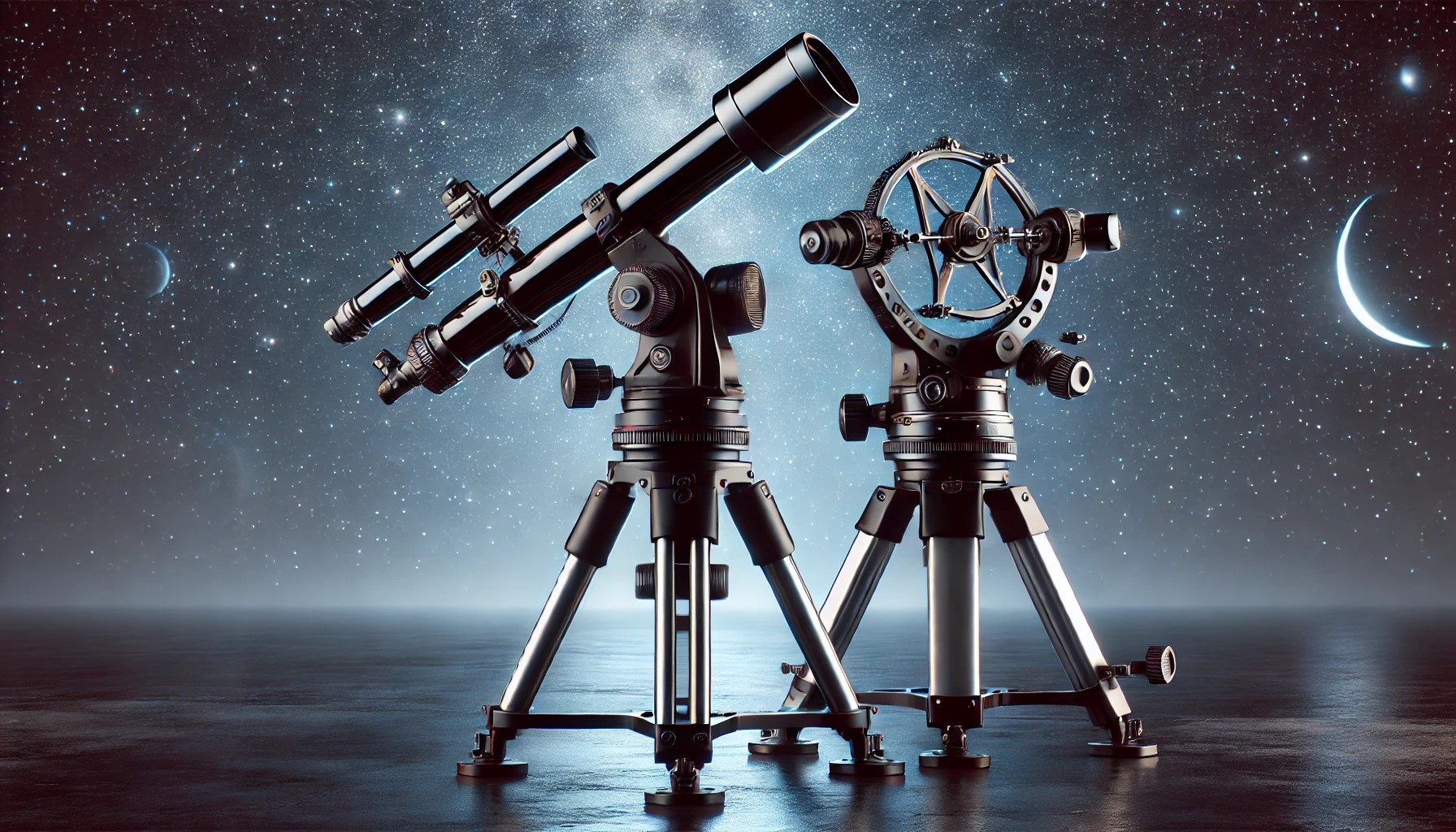Choosing the right telescope mount makes a difference in stability, tracking, and ease of use. The two main types are alt-azimuth and equatorial mounts. One is simple and intuitive, while the other excels in tracking celestial objects. Understanding how they work helps determine which suits a specific need.
Alt-Azimuth Mounts: Simple and Versatile
An alt-azimuth (AZ) mount moves in two directions: up and down (altitude) and side to side (azimuth). This makes operation straightforward, similar to a camera tripod.
Key Features:
- Easy setup with minimal adjustments
- Manual or motorized movement in two axes
- Lightweight and portable
- Ideal for terrestrial and astronomical use
Best For:
- Beginners who need a user-friendly option
- Casual stargazing sessions
- Observing the Moon, planets, and bright deep-sky objects
- Terrestrial viewing with spotting scopes
Limitations:
- Tracking objects manually requires frequent adjustments
- Not optimized for long-exposure astrophotography
- Motion does not follow the natural rotation of the sky
Types of Alt-Azimuth Mounts:
- Manual AZ Mounts – Operated by hand or slow-motion controls
- Motorized AZ Mounts – Controlled electronically, useful for basic tracking
- GoTo AZ Mounts – Uses a computerized system to locate and track objects automatically
Equatorial Mounts: Precision Tracking for Astronomy
An equatorial (EQ) mount aligns with Earth’s axis, allowing smooth tracking of celestial objects as they move across the sky.
Key Features:
- Movement in right ascension (RA) and declination (DEC) axes
- Designed for astronomical tracking
- Compensates for Earth’s rotation
- Suitable for long-exposure astrophotography
Best For:
- Observers who want accurate tracking
- Deep-sky astronomy
- Astrophotography enthusiasts
- Advanced users who require precision
Limitations:
- Requires polar alignment for accurate tracking
- More complex setup compared to alt-azimuth mounts
- Bulkier and heavier, making transport less convenient
Types of Equatorial Mounts:
- German Equatorial Mount (GEM) – Most common type, with a counterweight for balance
- Fork Mount – Often used for Schmidt-Cassegrain telescopes, reducing counterweight needs
- Hybrid Mounts – Combine equatorial tracking with alt-azimuth ease
Key Differences: Alt-Azimuth vs. Equatorial
| Feature | Alt-Azimuth Mount | Equatorial Mount |
|---|---|---|
| Movement | Up/down, side-to-side | Follows Earth’s rotation |
| Ease of Use | Simple, point and look | Requires alignment |
| Tracking | Manual or motorized | Smooth tracking for astrophotography |
| Weight | Lightweight | Heavier due to counterweights |
| Best For | Beginners, casual observing | Serious astronomy, astrophotography |
Choosing the Right Mount
For Casual Observing
- An alt-azimuth mount provides quick setup and ease of use.
- Ideal for Moon and planet observation without complex adjustments.
For Astrophotography
- An equatorial mount ensures smooth tracking over long exposures.
- Essential for capturing faint deep-sky objects without motion blur.
For Portability
- Alt-azimuth mounts are lightweight and compact.
- Some smaller equatorial mounts offer a balance between portability and tracking.
For Automated Tracking
- GoTo systems available for both types enhance object location.
- Equatorial GoTo mounts allow advanced imaging and precise tracking.
Final Thoughts
Choosing between an alt-azimuth and equatorial mount depends on the purpose of observation. An alt-azimuth mount suits quick, simple viewing, while an equatorial mount excels in tracking and astrophotography. Understanding the differences helps in making the best decision for any level of astronomy experience.
